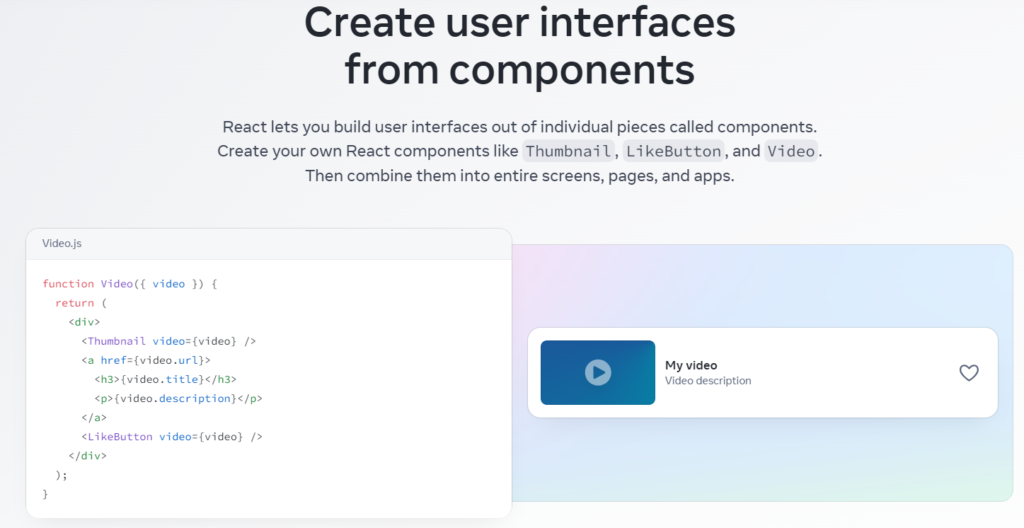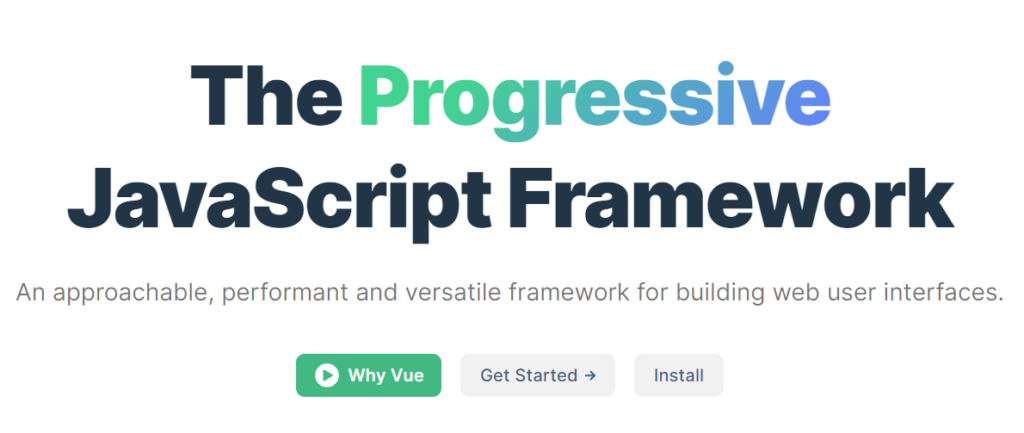It can be overwhelming for a beginner to choose which framework to learn first. But fear not, because I will explore the best JavaScript frameworks for beginners in this article.
JavaScript frameworks are essential tools for building dynamic and interactive web applications. They provide developers with pre-written code and libraries that simplify the development process, making it faster and more efficient.
So, whether you’re a seasoned developer looking to expand your skillset or a beginner just starting, this article help you take your coding skills to the next level.
Let’s dive in!
Key Takeaways
- React, Angular, Vue.js, and Ember.js are widely recognized and popular JavaScript frameworks for building web applications.
- React is known for its efficiency, scalability, and component-based architecture, while Angular is comprehensive and emphasizes complex and scalable applications.
- Vue.js is easy to learn and use, versatile for small and large projects, and has a vibrant community.
- Ember.js is a robust framework with clear and intuitive syntax, built-in routing, and automatic data binding.
React
If you’re a beginner in web development, React is a powerful JavaScript framework that you should consider learning. Among the best JavaScript frameworks available, React is widely recognized for its efficiency and scalability. With React, you can build interactive and dynamic user interfaces for your websites or web applications.
React is particularly popular for front-end development due to its component-based architecture. This means that you can break down your user interface into reusable components, making it easier to manage and maintain your code. By using React, you can create complex UIs by combining these reusable components.

One of the key advantages of React is its virtual DOM (Document Object Model). This feature allows React to efficiently update and render only the necessary components when there are changes in the data. As a result, React improves the overall performance of your web application.
Another reason why React is one of the top JavaScript frameworks is its strong and supportive community. You can find numerous resources, tutorials, and libraries that can help you learn and enhance your React skills.
Angular
Angular is a comprehensive JavaScript framework that offers a wide range of features for building robust web applications. It is one of the most popular JavaScript frameworks, known for its ability to create dynamic and interactive user interfaces. Angular is part of the MEAN stack, which includes MongoDB, Express.js, and Node.js, making it a great choice for building full-stack applications.
What sets Angular apart from other JavaScript frameworks is its emphasis on building complex, scalable applications. With Angular, you can easily manage data binding, handle complex routing, and create reusable components. It also provides a powerful dependency injection system, allowing you to easily manage and share data between different components.
Another advantage of Angular is its extensive documentation and large community support. This means that as a beginner, you can easily find resources and help when needed. There are also many tutorials and online courses available to help you get started with Angular.
Vue.js
Vue.js is a lightweight JavaScript framework that allows you to build user interfaces with ease. It is a popular choice among beginners due to its simplicity and flexibility.
Here are some reasons why you should consider learning Vue.js:
- Easy to learn and use: Vue.js has a gentle learning curve and offers a simple syntax, making it accessible for beginners. You can quickly get started with building interactive web applications without being overwhelmed by complex concepts.
- Versatile and scalable: Vue.js is designed to be incrementally adoptable, meaning you can integrate it into an existing project or use it to build a complete application from scratch. It allows you to scale your application as your needs grow, making it suitable for small and large projects.
- Rich ecosystem: Vue.js has a vibrant and active community, which means you can find plenty of resources, tutorials, and plugins to help you along the way. Whether you need a component library, state management solution, or routing system, many options are available to enhance your development experience.
- Performance optimization: Vue.js uses a virtual DOM to update and render components, resulting in better performance efficiency. It also provides features like lazy loading and asynchronous rendering, allowing you to optimize your application’s speed and responsiveness.
- Great documentation: Vue.js has comprehensive and well-organized documentation, making it easy to find answers to your questions and troubleshoot any issues you may encounter.

Ember.js
Ember.js is a robust JavaScript framework that offers a comprehensive set of tools for building ambitious web applications. With Ember.js, you can create complex applications that are scalable and maintainable. It follows the convention over the configuration principle, providing default behaviours and structures that help you get started quickly.
One of the key features of Ember.js is its strong focus on developer ergonomics. It provides a clear and intuitive syntax that allows you to write code that is easy to read and understand. Ember.js also includes a powerful templating system called Handlebars, which enables you to create reusable components and efficiently update the user interface.
Another advantage of Ember.js is its built-in routing system. This allows you to easily manage different application states and URLs, making it simple to create single-page applications with multiple views. Ember.js also supports automatic data binding, meaning that changes in the data are automatically reflected in the user interface without requiring manual updates.
In addition, Ember.js has a vibrant and supportive community with many resources and plugins available. This makes it easy to find help and extend the functionality of your applications. So, if you’re looking for a powerful and beginner-friendly JavaScript framework, Ember.js is worth considering.
Backbone.js
Backbone.js is a lightweight JavaScript framework that provides a simple and organized way to structure your web applications. It allows you to build single-page applications by providing modular components that work together seamlessly.
Some reasons why learning Backbone.js can be liberating for beginners:
- Simplified Structure: Backbone.js helps you organize your code by clearly separating concerns. It encourages using models, views, and collections, making maintaining and extending your codebase easier.
- Models: Backbone.js allows you to define models representing your application’s data. These models can handle data validation, syncing with the server, and event triggering.
- Views: Backbone.js lets you create views representing your application’s user interface. These views can listen to model events and update the UI accordingly.
- Flexible and Lightweight: Backbone.js is designed to be minimalistic and lightweight, allowing you to choose the libraries and tools you want to work with. It doesn’t impose a specific way of doing things, giving you the freedom to customize and adapt to your project’s needs.
Meteor
Meteor is a powerful JavaScript framework that simplifies building real-time web applications. Meteor allows you to create applications that update in real-time, meaning any changes made to the application are immediately reflected on all connected devices. This makes it perfect for building collaborative applications, chat systems, or any other application where real-time updates are crucial.
Meteor embraces a full-stack approach, providing tools and libraries for both the client and server sides of your application. It uses a single language, JavaScript, for both the front-end and back-end development, making it easier to learn and work with.
One of the key features of Meteor is its data synchronization. It automatically synchronizes data between the client and server, eliminating the need for manual data updates. This simplifies the development process and lets you focus on building the application logic rather than worrying about data synchronization.
Another advantage of Meteor is its extensive package ecosystem. The Meteor community has developed a wide range of packages that you can easily integrate into your application to add functionality. Whether you need user authentication, database management, or third-party API integration, a package is likely available to meet your needs.
Express.js
To enhance your understanding of JavaScript frameworks, let’s delve into Express.js, a powerful and versatile framework for building web applications. Express.js is widely recognized as one of the most popular frameworks in the JavaScript ecosystem, and for good reason.
It offers a simple and minimalist approach to web development, allowing you to focus on creating robust and scalable applications without getting bogged down by unnecessary complexity.
Here are a few reasons why Express.js is worth learning:
- Easy to learn and use: Express.js has a straightforward and intuitive API, making it accessible to beginners. Its minimalist design allows you to quickly grasp the core concepts and start building applications in no time.
- Flexible and modular: Express.js provides a modular structure that allows you to easily add or remove components as needed. This flexibility enables you to build applications tailored to your specific requirements, without being constrained by rigid frameworks.
- Extensive middleware support: Express.js offers a wide range of middleware options, allowing you to add functionality to your applications with ease. Whether you need to handle authentication, logging, or error handling, Express.js has got you covered.
- Large and active community: Express.js has a vibrant community of developers who actively contribute to its ecosystem. This means you can find plenty of resources, tutorials, and examples to help you along your learning journey.
Polymer
Polymer allows you to create reusable custom elements for your web applications, making it easier to build complex user interfaces.
One of the key benefits of using Polymer is its focus on web standards and compatibility. It leverages the power of the Web Components standard, which includes four main technologies: Custom Elements, Shadow DOM, HTML Templates, and HTML Imports. By using these standards, Polymer ensures that your components work across different browsers and can be easily shared and reused.
Polymer also provides a declarative syntax that simplifies the creation and manipulation of web components. With Polymer, you can define your custom elements using simple HTML-like syntax, making it easier to understand and maintain your code. Polymer’s data binding capabilities also allow you to easily update and synchronize data between different components, reducing the need for manual DOM manipulation.
Another advantage of using Polymer is its vibrant community and extensive collection of ready-to-use components. The Polymer Elements catalog offers a wide range of pre-built components that you can use in your projects, saving you time and effort.
Aurelia
Aurelia, a powerful JavaScript framework, offers a seamless and intuitive approach to building robust web applications. With Aurelia, you can create dynamic and interactive user interfaces that will captivate your users. Here are some key features that make Aurelia a great choice for beginners:
- Declarative Syntax: Aurelia uses a simple and declarative syntax that allows you to describe your application’s structure and behaviour clearly and concisely. This makes it easier to understand and maintain your code.
- Two-Way Data Binding: Aurelia provides powerful two-way data binding capabilities, allowing you to synchronise your UI and data effortlessly. Any changes to your data will automatically be reflected in the UI, and vice versa.
- Modularity: Aurelia is designed to be highly modular, allowing you to easily break your application into smaller, reusable components. This promotes code reusability and makes it easier to maintain and test your application.
- Extensibility: Aurelia is built with extensibility in mind. It provides a plugin system that allows you to add functionality to your application easily. Whether you need to integrate with third-party libraries or add custom features, Aurelia makes extending your application’s capabilities easy.
With its intuitive syntax, powerful data binding, modularity, and extensibility, Aurelia is a fantastic choice for beginners looking to build robust web applications. So why wait? Dive into Aurelia and unleash your creativity today!
Svelte
Svelte is a modern JavaScript framework that offers a unique approach to building fast and efficient web applications. Unlike traditional frameworks that run in the browser and interpret code at runtime, Svelte takes a different approach by compiling your application code into highly optimized JavaScript during the build process.
This means that instead of shipping a bulky framework to the client’s browser, Svelte compiles your code into lightweight, vanilla JavaScript that runs directly in the browser without needing a runtime library.
One of the key advantages of Svelte is its small bundle size. By compiling your code upfront, Svelte eliminates the need for a runtime library, resulting in smaller bundle sizes than other frameworks. This not only improves the initial load time of your application but also reduces the amount of code that needs to be transferred over the network, making your application faster and more efficient.
Another advantage of Svelte is its simplicity. The framework provides a clean and intuitive syntax that is easy to understand, making it ideal for beginners. With its reactive programming model, Svelte allows you to easily create dynamic user interfaces without the need for complex state management libraries. This simplicity not only makes it easier for beginners to learn and use the framework but also improves the overall development experience.
In addition to its simplicity, Svelte also offers great performance. By compiling your code beforehand, Svelte eliminates the need for runtime interpretation, resulting in faster and more efficient code execution. This makes Svelte an excellent choice for building high-performance web applications.
Frequently Asked Questions
What Is the Main Difference Between React and Angular?
The main difference between React and Angular is that React is a library while Angular is a full-fledged framework. React focuses on building user interfaces, while Angular provides a complete solution for building web applications.
Can I Use Vue.Js With Other Javascript Frameworks?
Yes, you can use Vue.js with other JavaScript frameworks. It is designed to be flexible and can be easily integrated into existing projects. This allows you to take advantage of the benefits of Vue.js while utilizing other frameworks.
Is Ember.Js Suitable for Building Large-Scale Applications?
Yes, Ember.js is suitable for building large-scale applications. Its robust architecture and built-in conventions make it a powerful choice. You’ll benefit from its strong community support and extensive documentation.
How Does Backbone.Js Handle Data Binding?
Backbone.js handles data binding by using a two-way binding approach. It automatically updates the view when the model changes, and vice versa. This makes it easy to keep your data and UI in sync.
What Are the Advantages of Using Meteor for Real-Time Applications?
Using Meteor for real-time applications has several advantages. It provides seamless data synchronization between client and server, automatic UI updates, and a simple, intuitive programming model. Plus, it has a vibrant community and extensive package ecosystem.
Conclusion
If you are a beginner looking to learn JavaScript frameworks, React, Angular, Vue.js, Ember.js, Backbone.js, Express.js, Polymer, Aurelia, and Svelte are all excellent options.
Each framework has its own unique features and advantages, so it’s important to explore and experiment with them to find the one that best suits your needs and preferences.
With dedication and practice, you can become proficient in using these frameworks to develop powerful and interactive web applications.







